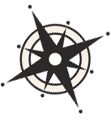Commercial shipping in Wisconsin requires well-maintained ports and harbors, while recreational boating relies on access to marinas and other landings. These resources help guide decision-making about the marine infrastructure that supports shipping and boating.
Promoting Resilient Ports and Harbors
-

GreatLakes Port and Harbor Infrastructure and Dredging Cost Evaluation Matrix Case Study
A matrix model to estimate the cost of building and maintaining structures at large ports in the Great Lakes. -

Failing Coastal Wood Infrastructure on the Great Lakes Publication
Fact sheet on timber structure failure mechanisms and potential solutions. -

Best Practice Inspection Guidelines for Great Lakes Port, Harbor and Marina Structures Publication
Fact sheet with inspection guidelines to prevent structure deterioration -

Climate Change and Adaptation Strategies for Great Lakes Ports, Harbors and Marinas Publication
Fact sheet on potential future Great Lakes water levels and their possible impacts to waterfront facilities -
Boater Maps and Information
-

Boater's View Map
Integrates forecast models and buoy data with information about boat launches and marinas. -

Great Lakes Nautical Chart Catalog and Chart Viewer Map
Nautical charts for the Great Lakes are available in many digital formats from the NOAA Office of Coast Survey. -

Great Lakes Environmental Response Management Application (ERMA) Map
This tool supports emergency responders and environmental resource managers with coastal pollution cleanup, restoration, and response efforts in the Great Lakes basin.
Promoting Clean and Resilient Marinas
-

Wisconsin Clean Marina Best Management Practices Toolkit
The program provides guidance, training and education that help marina and boatyard operators improve their management practices. A guidebook provides best practices that address marine facilities and nonpoint sources of pollution. -
-

Resilient Marinas Toolkit
Resources that improve understanding of potential climate-related impacts and provide a suite of management practices, infrastructure improvements, and funding options.
